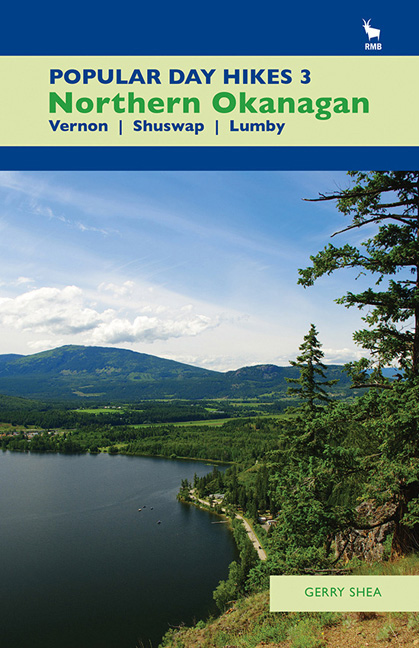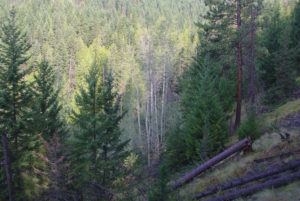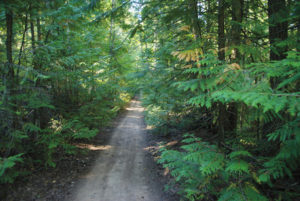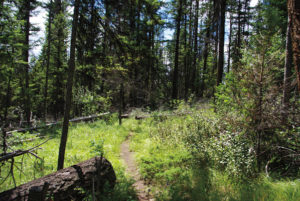Distance
The path shadows Reinecker Creek, crossing it about three times before reaching the falls. Of course, the water level varies significantly depending on the time of year, but the constant seems to be a slow, easy flow. Considering the noise and heartfelt pounding of the falls a short distance away, the leisurely passage of the stream fails to prepare you for what lies ahead.
As mentioned, the trees in this canyon are enormous. Several have fallen, yet even uprooted they insist on living; they lean on the canyon walls like huge ramps up to the rim. Most are towering, broad suppliers of abundant shade, rendering the stroll cool and dank, yet refreshing.
At the end of this short, fascinating journey, the trail becomes a wooden platform, soaked from the constant spray of Margaret Falls. Be careful your camera doesn’t get wet, and more importantly, watch your footing on the slippery planks.
Directions
From downtown Salmon Arm, travel west on the Trans-Canada Highway for 15 km and turn right onto Sunnybrae Canoe Point Rd. Drive 11.2 km to arrive at the Margaret Falls parking lot, on the left side of the road. From the parking lot, follow the marked path to Margaret Falls, which initially heads downhill.






